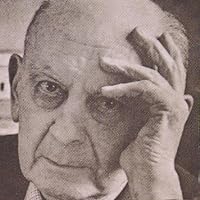Pre Romanticism Quotes
Quotes tagged as "pre-romanticism"
Showing 1-2 of 2

“Richardson' moralizing novels contain the germ of the most immoral art that has ever existed, namely the incitement to indulge in those wish-fantasies in which decency is only a means to an end, and the inducement to occupy oneself to mere illusions instead of striving for the solution of the real problems of life. They also, for that reason, denote one of the most important dividing lines in the history of modern literature; previously the works of an author were either really moral or immoral, but since his time the books which want to appear moral in most cases merely moralize. In the struggle against the upper classes the bourgeois loses his innocence, and as he has to emphasize his virtue all too often, he becomes a hypocrite.”
― The Social History of Art Volume 3: Rococo, Classicism and Romanticism
― The Social History of Art Volume 3: Rococo, Classicism and Romanticism

“The ‘Sturm und Drang’ was even more complicated in its sociological structure than the West European forms of preromanticism, and not merely because the German middle class and the German intelligentsia had never identified themselves closely enough with the enlightenment to keep their eyes sharply fixed on the aims of the movement and not to deviate from it, but also because their struggle against the rationalism of the absolutist regime was at the same time a struggle against the progressive tendencies of the age. They never became aware of the fact that the rationalism of the princes represented a less serious danger for the future than the anti-rationalism of their own compeers. From being the enemies of despotism they, therefore, became the instruments of reaction and merely promoted the interests of the privileged classes with their attacks on bureaucratic centralization. To be sure, their struggle was not directed against the social levelling tendencies of the system, with which aristocratic and upper middle-class interests were in conflict, but against its generalizing influence and violation of all intellectual distinction and variety. They championed the rights of life, of individual being, natural growth and organic development, against the rigid formalism of the rationalized administration, and meant not only the denial of the bureaucratic state with its mechanical generalization and regimentation, but also the repudiation of the planning and regulating reformism of the enlightenment. And although the idea of the spontaneous, irrational life was still of an indefinite and fluctuating nature and certainly hostile to the enlightenment, but not yet markedly conservative in its purpose, nevertheless, it already contained the essence of the whole philosophy of conservatism. It did not need much now to ascribe a mystical superrationality to this principle of ‘life’, in contrast to which the rationalism of enlightened thought seemed unnatural, inflexible and doctrinaire, and to represent the rise of political and social institutions from historical ‘life’ as a ‘natural’, that is to say, superhuman and superrational growth, in order to protect these institutions against all arbitrary attacks and to secure the continuance of the prevailing system.”
― The Social History of Art Volume 3: Rococo, Classicism and Romanticism
― The Social History of Art Volume 3: Rococo, Classicism and Romanticism
All Quotes
|
My Quotes
|
Add A Quote
Browse By Tag
- Love Quotes 97.5k
- Life Quotes 76k
- Inspirational Quotes 73k
- Humor Quotes 43.5k
- Philosophy Quotes 29.5k
- Inspirational Quotes Quotes 27k
- God Quotes 26k
- Truth Quotes 23.5k
- Wisdom Quotes 23.5k
- Romance Quotes 23k
- Poetry Quotes 22k
- Death Quotes 20k
- Happiness Quotes 18.5k
- Life Lessons Quotes 18.5k
- Hope Quotes 18k
- Faith Quotes 18k
- Quotes Quotes 16.5k
- Inspiration Quotes 16.5k
- Spirituality Quotes 15k
- Religion Quotes 15k
- Motivational Quotes 15k
- Writing Quotes 15k
- Relationships Quotes 14.5k
- Life Quotes Quotes 14k
- Love Quotes Quotes 14k
- Success Quotes 13.5k
- Time Quotes 12.5k
- Motivation Quotes 12k
- Science Quotes 11.5k
- Motivational Quotes Quotes 11.5k

